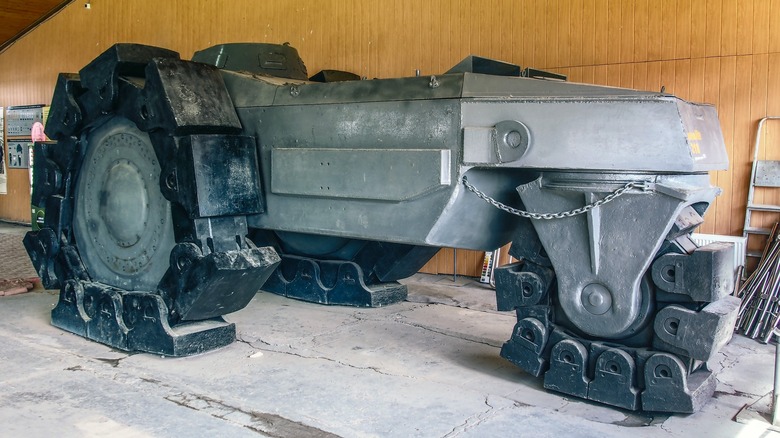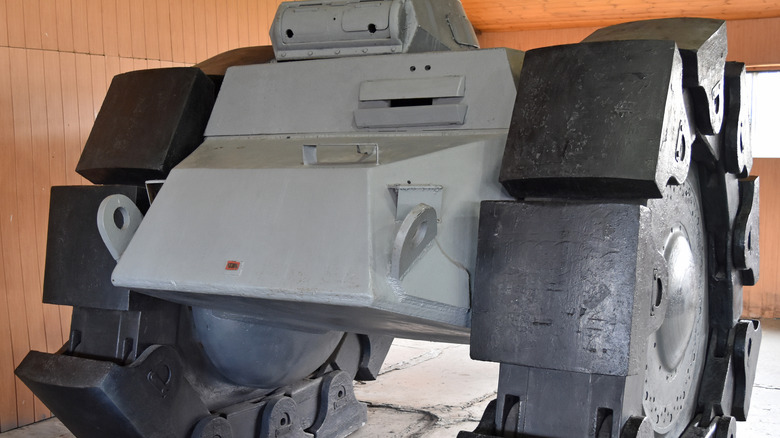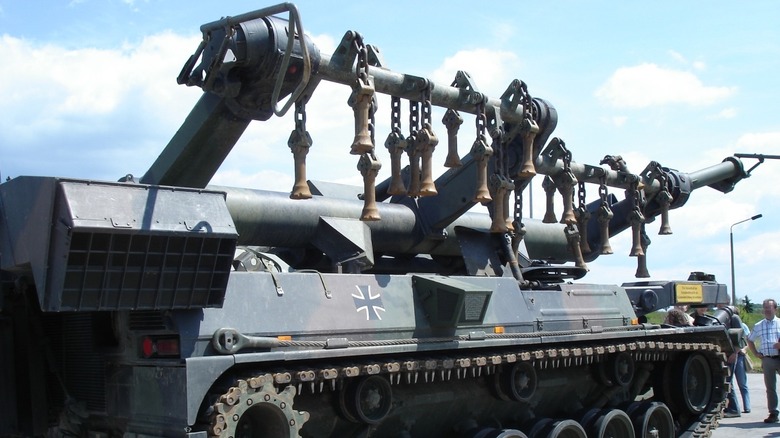Did Nazi Germany's Armored Mine-Clearing Tractor Actually Work?
So you know how landmines are really, really dangerous? You can't see them until you step on them, and then kaboom — you might not even realize that you did. Well, believe it or not, there are still about 110 million landmines embedded in the earth from various military conflicts, like from the Khmer Rouge genocide from 1975 to 1979, as the humanitarian organization Minesweepers cites. That ought to give you a different perspective on that ancient Windows game where you click on the little gray squares.
Nazi Germany knew about the dangers of landmines, too. In the article "The Coward's War: Landmines and Civilians" (posted on JSTOR), the journal Medicine and War describes Allied forces planting between 5 million and 19 million landmines in North Africa alone during World War II to fight Axis forces. The Allies themselves used a crude-seeming, but highly effective mine-clearing trawl for disarming Axis mines: a tank with flails that whip around when the vehicle rolls forward, as We Are the Mighty explains.
Nazi Germany, though, had a strange tendency to concoct bizarre technological solutions to the problems of war. As All That's Interesting outlines, they tried building countless "Wonder Weapons" to obliterate enemy forces, each invention more outlandish than the last, like the "Great Gustav" tank and its seven-ton shells. So rather than just copy-paste the Allied flail-tank design, they went full ridiculous and tried their hand at building three-footed tank-tractor things that rolled right over mines.
A big, heavy, turret-mounted tricycle
It's not that Nazi Germany tried to disarm landmines — they just tried to detonate them. As We Are the Mighty details, the first such landmine-detonating tank-tractor was the VsKfz 617 Schwere Minenräumer (NK-101), built in 1942 as a joint venture between a few German manufacturers. Like a tricycle, its front tread steered, while the back two stayed immobile. The treads' shoes were really thick to withstand detonations, and had easily replaceable parts. The whole vehicle was also elevated one meter off the ground, and had V-shaped armor to deflect the blast of a landmine.
The Minenräumer was designed to be operated by two people: a driver and a gunner. The gunner used a turret installed from the German Panzer I tank, a tank used throughout World War II aside its more advanced cousins, as the World War II database describes. The gunner in this case was also the commander, who sat on the Minenräumer's right side. The driver sat on the left. As Old Machine Press explains, these occupants sat atop a hull made of two layers of armor. The inner layer was a mere 0.79 in (20 mm) thick, while the outer layer, meant to absorb landmine blasts, was an extra-thick 1.58 in (40 mm).
All of this sounds feasible on paper. The first Minenräumer was produced, and testing started right away. But in the end, it was the only one made.
Faulty design from the get-go
In hindsight, the problems with the Minenräumer seem completely foreseeable. At 50 tons it was far too heavy to steer, especially since its meager 300hp engine gave it a pathetic top speed of 2.4 mph, as We Are the Mighty states. This means that soldiers on foot, carrying equipment and trudging through mud, would have needed to wait for it to catch up. Being so slow, as Old Machine Press says, the Minenräumer was also an easy target for artillery. And speaking of mud, the vehicle also couldn't cope with any adverse terrain. Basically, the whole thing was a disaster. The project got canned on the spot, and its one prototype now resides in the Kubinka Tank Museum in Moscow.
But lo and behold, following this debacle, Germany caught on and went with a more sensible mine-trawling design similar to that of the Allies. That is, once the war ended. Vehicles like the Minenräumpanzer Keiler (pictured above) are still in use today. In videos on YouTube, the trawler looks like a big mechanical farm plow kicking up giant plumes of dirt in front of it as it moves forward. Occasionally there'll be a pop and a white puff of smoke — that's a landmine going off. Different militaries use different vehicles nowadays, but all of them are variations on the same, World War II-created design. The Hydrema 910, for example, is basically a snow plow with flails in front of the plow, per Military Today.


